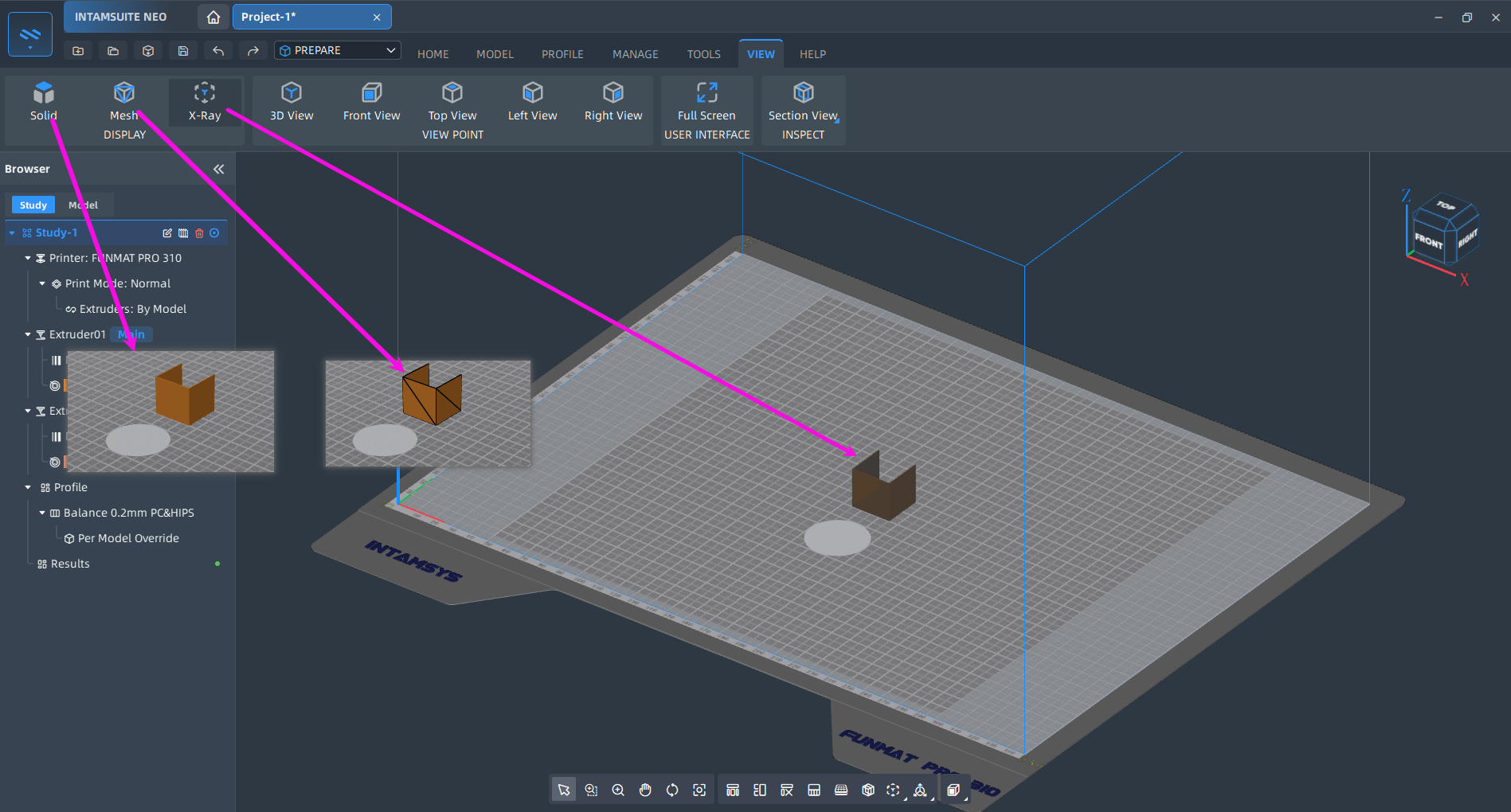¶ Model display modes
The software currently supports three view display modes:
Solid display, mesh display, and X-perspective display are commonly used visualization techniques in 3D computer graphics. They differ in the way they display objects.
¶ Solid Rendering
Solid Rendering is a technique that renders the surface of an object as a solid. It makes an object look more like a solid with a sense of volume and texture by lighting its appearance. Solid display can provide realistic effects for application scenarios that require realism and detailed surface details.
¶ Mesh Rendering
Mesh Rendering is a technique that displays only the boundaries and key structures of an object. It forms a mesh structure by connecting the vertices, edges, and faces of an object to simplify and represent the object's geometry. Mesh displays are usually rendered as lines to show the structure and shape of an object more clearly and are suitable for scenes where the appearance of an object needs to be shown quickly.
¶ X-Ray Rendering
X-Ray Rendering is a technique that makes the internal structure of an object visible at the same time as the external surface. X-Ray Rendering is a technique that makes the internal structure of an object visible along with the external surface, allowing the user to see the internal structure of the object while preserving the surface characteristics. X-Ray Rendering is commonly used in the fields of medicine, engineering, and scientific visualization, and can help the user better understand the internal composition of an object.
To summarize, solid displays emphasize the appearance and texture of an object, mesh displays emphasize the structure and shape of an object, and x-view displays take into account both the internal and external features of an object.
